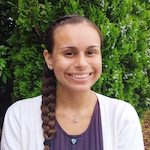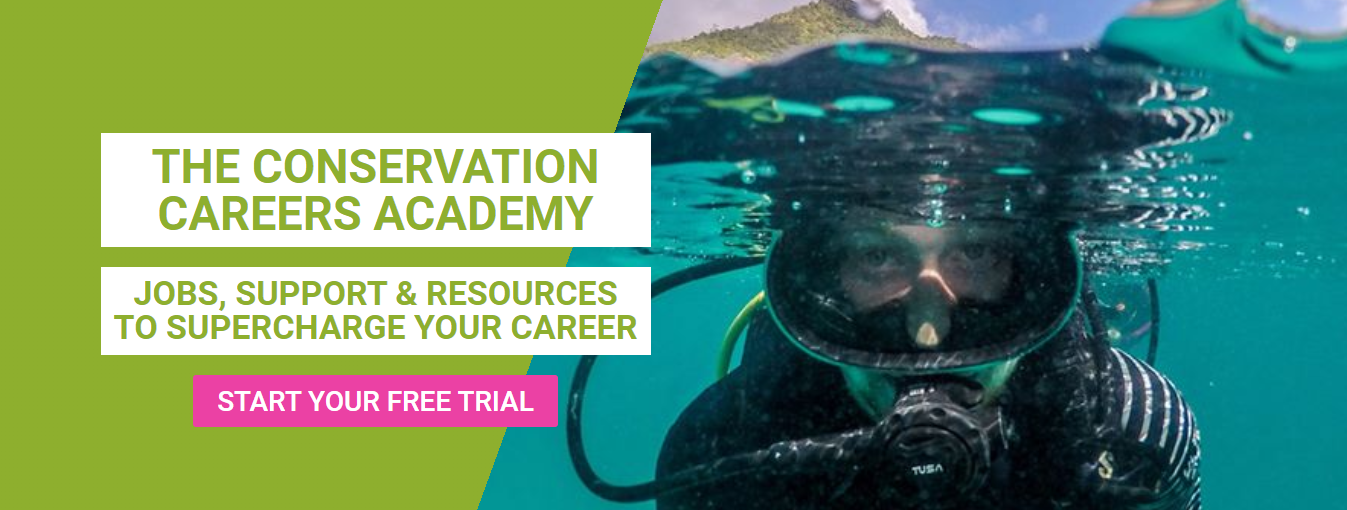
Call To Arms | Why volunteers need scientists to help win the conservation argument
“I don’t do pilates, I don’t do nails, I don’t do coffee with friends. All I do is my conservation group and my conservation work”.
Despite studying a Bachelor of Science (Applied Sciences) and working as a physiotherapist specialising in paediatrics for many years, Lisa Harrold never lost sight of her true passion for conservation.
Since having a family, she has worked tirelessly as a volunteer, advocating for the protection of the critically endangered Cumberland Plain Woodland and its primary ecological community.
However, she knows that she can’t do this alone and needs more research scientists in conservation to back her local efforts.
Read on for advice about gaining valuable volunteer experience and how this can help you secure a role in conservation. It is so important for people to take action for the environment and to ultimately help provide the much-needed science for backing the work of volunteers!
Inspiring the next generation of conservation
With the ever-growing construction of the new Glenmore Park suburb (Western Sydney, Australia), Lisa just couldn’t accept that the small creeks she visited, picnicked at and fossicked around in were gouged out and replaced with massive concrete pipes. Natural watercourses and habitat areas were simply vanishing from the landscape…
By the time Lisa was 18, she was appalled by the blatant disregard for wildlife and voiced her concerns to the deputy headmaster at Regentville Public School (Western Sydney, Australia). She and the children in Years 5 and 6 went on an excursion to learn about protecting the local bushland, where they were encouraged to write submissions to the local council (which was exhibiting plans for the development and urbanisation of Glenmore Park).
“I took something like 151 submissions, just kids drawing [something as simple as] a picture of an animal [with the words] ‘leave some bush for the animals’. And they actually recorded them as submissions. I stood up in council for the first time… I’ve always been a person that if I see an injustice or an imbalance, I have to speak!”

Students from Mulgoa Public School attending a workshop to learn about the diet of the platypus.
From little things, big things grow…
After Lisa got involved in the local Mulgoa Progress Association (an established group), the exhausting battle to challenge the development of Glenmore Park continued. Yet their efforts were not in vain.
“Mulgoa Nature Reserve (which sits beside Glenmore Park) did arise from all that fighting. Over the years, just through lobbying, meetings and working with politicians, councillors and communities, we’ve actually managed to grow Mulgoa Nature Reserve from the original 63 hectares to 250 hectares!”
However, it’s no time to stop and more continues to be achieved with the help of volunteers. Lisa also participates in 3 local monthly groups striving towards the restoration of the bushland, where she finds spending the mornings and enduring hardships with her beautiful volunteers “therapeutic”.
Check out this amazing resource or try this portal to find similar volunteer opportunities across Australia!
“Getting in and rolling up the sleeves for 3 hours and hand pulling weeds… you’ve got to step back and [see] it’s really important because it restores balance, allows native seed to germinate and allows the local genetic diversity to improve.
“A lot of people think bush regeneration is just weeding and [they should] just stay home and weed [their] garden. But… if you can instil that difference that you’re actually recreating habitat [for the wildlife to exist and restoring] the imbalance in our local bushland… that message is really important [for fulfilling a long-term end goal]… Every little weed is a victory to me”.
You can learn more about conservation internships and volunteering here!
Communication is key
As well as communicating with her volunteers regularly, Lisa also creates a newsletter every month and converses with stakeholders including the local council, Western Sydney University and National Parks and Wildlife Service.
In communicating with individuals and organisations who either manage bushland areas, have an interest in the outcomes, or are decision-makers that provide funding and deliver planning for the local area, Lisa meets a diverse group of people. She shares her insights into the importance of networking, which could provide further opportunities and help you gain confidence and knowledge.
“There’s a lot of behind-the-scenes meetings, group meetings, phone calls, on-site meetings, [especially] if you get government grants. We’ve been fortunate over the 27 years that Mulgoa Landcare has been operating, we’ve actually delivered over a million dollars in government grants and I’ve delivered all of those as a volunteer.
[It’s] a lot of work preparing the application, liaising with the [stakeholders], landholders or contractors doing the restoration, paying the bills and then documenting all of that as a final report”.

Lisa Harrold with the cheque received to support the installation of the possum crossing at Glenmore Park – it is now used daily by a sugar glider clan.
“We actually have had a few wins over the years. [In 2007] I ran as an independent federal candidate to get money for [Wianmatta Nature Reserve (that’s around 185 hectares)] and that in itself delivered $15 million. That patch of land was federal government land that was sold to a developer [with] plans into council for 800 houses”.
“Both parties promised me the same outcome, which was funding, and that was delivered towards purchasing it back from the developer. It became a nature reserve, so that was clearly worth the effort”.
Whether it be to a local individual or on the global stage, it is clear that communication is a crucial skill for conservation efforts. It’s important to find your voice in your career in order to advocate for change and what you believe is right – delivering these messages can enable education and political change in favour of the environment, as well as help articulate the necessity of a research grant and funding for your work. It’s true what they say – money talks!
Interested further about the power of communication in conservation? Check out this podcast!
Overcoming adversity
Despite Mulgoa Landcare’s advocation for the reserve’s expansion (through purchasing and acquiring more land to become a viable habitat patch), the fight continues.
“The reserve has been decimated during COVID-19, as everybody was in lockdown and it became a mountain bike park (something like 14km of tracks plus bumps have been created). It opens up for erosion… people will find ways of undermining your achievements, reducing the quality of conservation areas, demanding public access.”
“A lot of people can’t grasp the concept of setting aside small areas for wildlife. I always say ‘we don’t like it when a snake comes crawling through your house or a kangaroo gets trapped in your backyard’… they need space, a space for respite, a space to call their own where they feel safe.”
The native bushland of Western Sydney is now considered Critically Endangered, meaning there is only 5% of it remaining. However, during the tough COVID-19 lockdown restrictions, a debate arose about children going into green spaces to do physical activities and the benefit of this compared to using electronic devices.
“That 5% is so precious… we just can’t afford to have [people] digging it up and putting in bike tracks and jumps… You can’t change that sense of entitlement, that broader societal sense that the whole planet is theirs and should be accessed by human beings. I can’t agree with that, the wildlife that I cherish, that I grew up with, deserves a place to stay as well”.
However, the reality of the industry is that not every conservation campaign will be successful and Lisa describes the heartbreak of having to stand idly by and watching the bush be irretrievably cleared.
“You have to preserve what’s left and that’s the message the decision-makers refuse to get their heads around – it’s too hard, they want their road to go through there… and biodiversity suffers as a consequence. It’s demoralising, here I am on a Saturday morning pulling out weeds… there’s no guarantees for anything. But as I said… do you walk away, or do you just have to hold your head high and just keep going?”
Nevertheless, it is crucial that those in the conservation industry remain resilient to pursue their passions in the wake of hardship and losses. It’s important not to take insults and failures personally, knowing instead that they reflect how hard you tried to advocate on behalf of the environment.
The need for scientists to back volunteers
“As much as I’d love to go save the rhino species… I can’t do it from here… In terms of thinking globally [but acting locally], it’s no good just sitting and thinking ‘oh this is terrible, what can we do?’. You’ve got to throw yourself into it.”
Lisa talks about how she gains inspiration for her volunteering work from the people doing the “hard yards in terms of research”. She is a firm believer in the importance for the scientists of the world to present the argument for conservation.
“The only thing we can rely on in terms of winning the conservation argument is science. And I can’t do the science, I can deliver the message because I’m a volunteer and a community group leader, so I can take that information to my local politicians… But if I don’t have the research and I don’t have the science and the data… the [detrimental] development will continue.”
Here are Lisa’s top tips on how you can become a conservationist to support volunteers like her!
- Have a thick skin and know that you’re actually making a change and doing the right thing.
- Make connections and earn endorsements for your work.
- For roles related to bush regeneration, be prepared for physical labour.
- Gain on-ground skills relevant to your career interests – this might be field skills such as species identification and methodologies for restoration, as well as more logistical skills like managing funding.
- If job security is important to you, consider seeking government employment rather than contract work.
- Just go for job opportunities – it’s good experience and you never know, they may contact you in the future for another opportunity!
- Look at your longevity and where you want to be to determine your ideal job – is it always in the field?
- Be careful about the route you take and what you are willing to do for money – stay true to your heart and passion.
- And, most importantly, never give up!
“I always think, where there’s life, there’s hope and just keep moving forward”.
Author Profile | Madison White

Featured image: Lisa Harrold (pictured second from the right) with the members of the Mulgoa Landcare Group.
Careers Advice, Interviews, Celebrating Diversity in Conservation, Fundraiser, Land Manager, Policy Advocate, Community Conservation, Restoration & Rewilding

